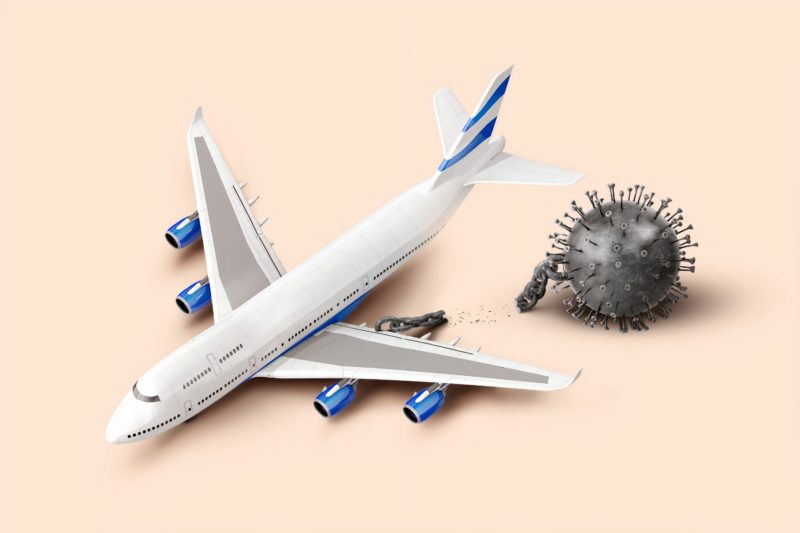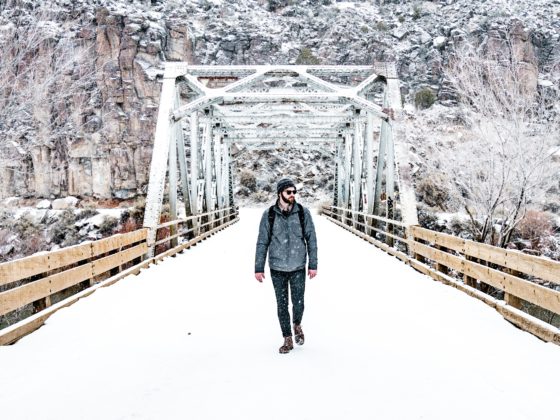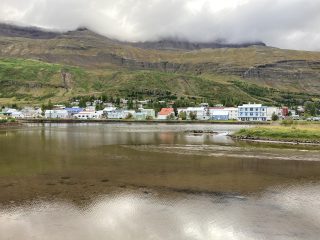By: Matthew Morrow
“Though we travel the world over to find the beautiful, we must carry it with us, or we find it not.” -Ralph Waldo Emerson, Emerson’s Essays
To travel is to take on new experiences and challenges. It pushes us outside of our comfort zone and exposes us to new places, people, and ways of life. For many, the coronavirus pandemic’s slow unfolding suspends any of the excitement that comes with planning and carrying out these rich experiences. In light of the slowly evolving international travel situation, it becomes prudent to take a holistic look at the new normal. This article’s approach includes a review of the pandemic’s progression, the risks and restrictions currently associated with travel, and the future of travel in terms of safety and feasibility.
Coronavirus Overview
COVID-19, standing for “coronavirus disease 2019,” is a virus that first appeared in late 2019 and rapidly spread around the globe. Today, more than eight million confirmed cases have surfaced since the initial reports of the virus in the Chinese city of Wuhan.
Although our understanding of the virus’s transmission is still developing, the primary path for spread appears to be from person-to-person contact. When a person coughs, sneezes, or talks, they release respiratory droplets or secretions. If two people are within six feet of each other when this happens, these particles can transmit the virus if they come in direct contact with a person’s mucous membranes (i.e., eyes, nose, mouth). Infection may spread through physical touch with other people and surfaces where the virus lies but can be prevented by washing one’s hands, wearing a face mask, and avoiding touching one’s eyes, nose, or mouth. Importantly, there is currently no evidence that the virus spreads through contact with pets or food and water.
Over the coronavirus pandemic’s progressive course, experts have communicated ever-evolving updates about the physical manifestations associated with contracting the virus. The latest updates affirm that many people show no changes at all. For others, symptoms typically appear within two weeks of contracting the virus (most commonly around 4-5 days). The most common symptoms are persistent cough and fever, which are present in approximately half of the symptomatic individuals. In order of decreasing frequency, other presenting symptoms that may include muscle aches, headache, shortness of breath, sore throat, diarrhea, nausea, and vomiting. The rarest manifestations of the virus are loss of smell or taste, abdominal pain, and runny nose.
For most affected individuals, mild symptoms will get better within a few weeks with simple, supportive care. If things worsen (i.e., trouble breathing), experts recommend calling a local hospital immediately or, in the case of a medical emergency, call for an ambulance. The most common serious complication of contracting the virus includes developing a severe respiratory illness, although other developments like blood clots and heart or kidney injuries have been reported.
Early evidence suggests that most infected persons develop antibodies to the virus, some of which may be protective. These findings are not confirmed yet, but a constant influx of data on this topic is emerging. A wide variety of vaccine options are currently undergoing testing to prevent the virus, but a champion has not yet emerged. For those interested in a full list of vaccine candidates, these are available on the World Health Organization’s website.
Clinical trials testing for post-exposure preventive treatment options are currently underway. One early candidate for this treatment role was the anti-malaria drug hydroxychloroquine. Unfortunately, the latest evidence suggests the drug is not effective in preventing infection. Many clinical trials studying this drug are undergoing early termination, so experts do not recommend using it for infection prevention outside of clinical trials. In the meantime, people who believe they came into direct contact with an infected individual should stay at home, away from other people (even people within the household) for two weeks.
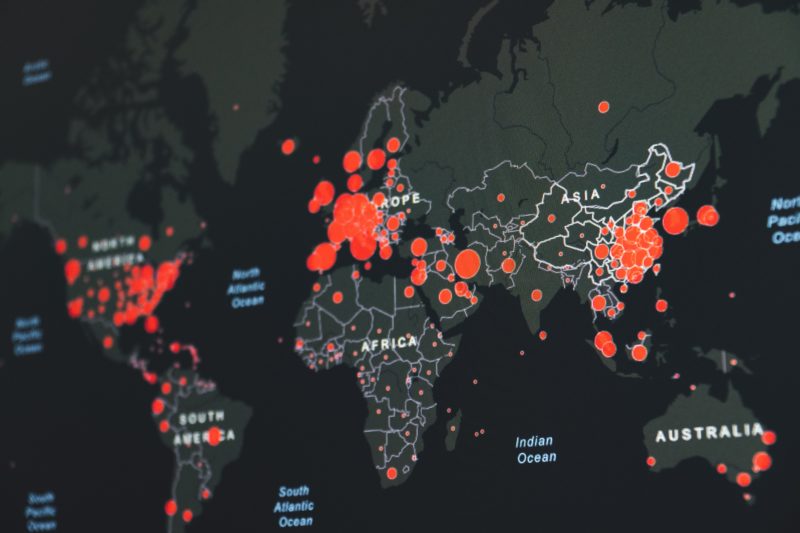 Pandemic Map
Pandemic Map
Travel Risks and Restrictions
As local infection rates begin to decrease, several lingering questions take residence in the minds of people who love traveling. Is it safe and practical to resume travel activities? Will my travel experience be significantly different in the wake of a global pandemic? Although it’s impossible to predict the exact course of this complex international crisis, a review of what we do know might soothe some of this curiosity.
A primary strategy used in preventing the macroscopic spread of COVID-19 has been social distancing. By closing workplaces and schools, imposing restrictions on travel, canceling large public gatherings, and even closing national borders, social distancing works to mitigate worsening rates of infection and regional resurgences of the virus. As local government authorities begin to ease social distancing guidelines, they have encouraged using other preventive measures such as wearing a face mask in public and appropriate hand washing.
The risks of traveling as the international community recovers from the pandemic ultimately depend on your travel arrangements and destination. To begin evaluating these risks, take a look at the rate in which infection is spreading in that location (The CDC’s website provides this information). Your general risk of getting infected by traveling there will parallel the local spreading. Second, think about whether you or someone you are traveling with is more likely to experience severe illness from contracting COVID-19. If known risk factors like advanced age and underlying chronic conditions exist, this will increase the risk of fatal outcomes due to unnecessary travel.
Lastly, assess how often you will be within six feet of others during the process of traveling. Sometimes proximity is unavoidable, as is the case with sitting near someone on a flight. However, many flights, buses, and trains now limit how many tickets they sell, and public places are enforcing appropriate capacity and distancing guidelines. In general, most flights filter and circulate air making infectious spread less likely, however depending on the flight duration and airport terminal set up, you might be close to others and surfaces touched by others for extended amounts of time. Although traveling by car puts you in close contact with those voyaging with you, it generally poses less risk than using public trains and buses (if the local transportation systems are operating).
Restrictions on travel and experiences during travel vary significantly from place to place. Some local governments will require visitors to stay home for two weeks upon arrival at their destination. For example, the state of New York currently requires visitors from specific states with high transmission rates to self-isolate for a minimum of two weeks. Many local restaurants without outdoor space have not opened their doors or are limiting purchases to delivery or curbside pickup. If you travel to places with popular tourist attractions, check to see how capacity limits have changed and what their protocols look like for online reservation of visitor time slots and required protective gear. For example, the Louvre, which plans to reopen on July 6, will require visitors to book a timeslot in advance on their website and wear a face mask upon entering. Many destinations and attractions are actively working to establish these protocols, so frequently checking for updates is helpful.
The most important thing to keep in mind when planning travel today is excellent preparation. Prepare for the situations mentioned above and anticipate which travel commodities you might need. Examples of useful items to pack include plenty of alcohol-based hand sanitizer, sanitizing wipes, face coverings, and non-perishable food or water (reduces frequent stopping for food and is helpful when restaurants are closed or have limited hours). Additionally, packing enough of any potentially needed medication and familiarizing yourself with the local hospital procedures is a must.
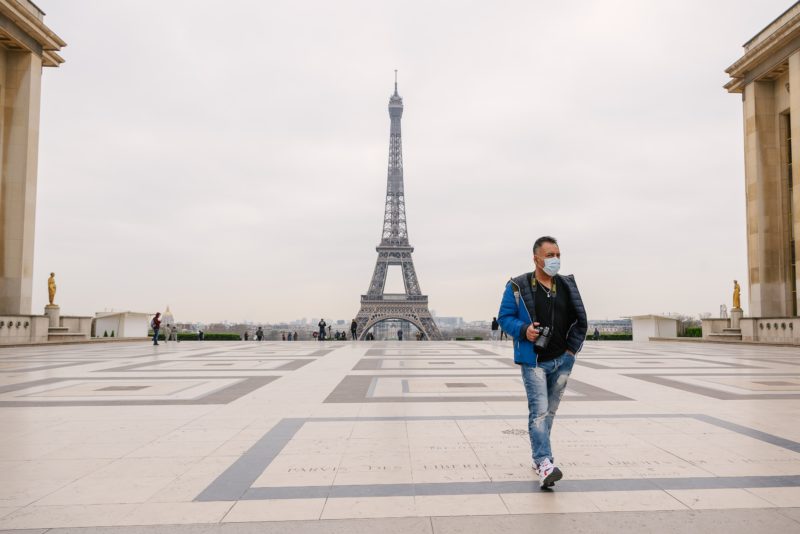 Paris, France
Paris, France
The Future of Travel
Much like travelers formerly adhered to the local rules and customs of their destinations, the pandemic imposes the new task of adapting to a new normal. A review of the available research and expert opinion illuminates some of the possible travel trends that are likely to develop. Travel industry leaders are preparing to take full advantage of available technologies to make traveling safer for everyone. For example, the addition of touchless security protocols at airport terminals and the normalization of biometric technologies (e.g., facial and voice recognition) will allow people to identify themselves and pay for goods and services without physically touching a single object.
Until more national borders open up for leisure travel and official travel safety statements are announced, most travel occurring in the next several weeks will likely be contained within national and regional borders. Shorter-distance travel is increasing in frequency and will likely serve as a half-measure until travelers build their comfort levels with the new normal. Given the variability in local regulations and the increasing rate of professionals switching to remote work, growing interest in long-term travel (longer than two weeks) may appear to accommodate for self-isolation requirements. Most people who work remotely have the luxury of working from anywhere, allowing for more extended vacation rentals to further rise in popularity. Airbnb has even recently added a new feature that makes it easier for renters to find month-long stays, in addition to revamping their cleaning requirements for hosts.
Travelers have many questions concerning when their favorite events will return. Large gatherings like music festivals, sporting events, and conferences are huge motivators of travel. These activities will likely be the last to return due to the sheer quantity of people who attend them, and the difficulty associated with sustaining profits while scaling back size. Further delays may arise, considering the current social distancing guidelines are subject to change with the transition of seasons. Experts warn about the potential dangers of a Flu-COVID collision in the fall and the possible seasonal resurgence of the coronavirus. Keeping an eye out for updates once the weather begins changing will be essential for planning travel.
Recent surveys of American travelers revealed that they are more comfortable using private vehicles and staying in private home rentals than commercial flights and staying in large public hotels. Until travelers feel more comfortable with previous modes of travel, the dying art of the road trip might see a resurgence. Additionally, dining options during travel may change. Although high-end restaurants or bars and popular fast-food chains have seen sustained success with the restrictive changes, those establishments that fall outside of these categories will likely continue to struggle and possibly close their doors. For those looking to continue supporting airlines, hotels, and middle-of-the-road food establishments, look out for loyalty programs and additional perks for frequent customers, which might see systematic improvements.
Today, we can still enjoy many of the same cuisines, sights, and attractions as before the pandemic, but with slightly altered rules. Over the next couple of months, more potential travel destinations will begin testing the waters for limited reopening. Unfortunately, this trend is subject to change as the pandemic evolves. Despite this uncertainty, there is beauty to found with these changes. They represent a global community of humans looking out for the health and safety of each other. Echoing the sentiments of Ralph Waldo Emerson, when it comes to travel, beauty truly lies within the eyes of the beholder.
Matthew Morrow is the newest intern at Literary Traveler. He graduated from the College of the Holy Cross in 2016 with a bachelor’s degree in Psychology, and later obtained a master’s degree in Medical Science from Northwestern University. Growing up he spent his summers living in South America, where he developed a fascination with traveling and the richness of foreign cultures. He loves being overly friendly while traveling and unexpectedly creating lasting friendships with locals and travelers across the globe. He currently plans to divide his time between freelance writing and practicing medicine.

